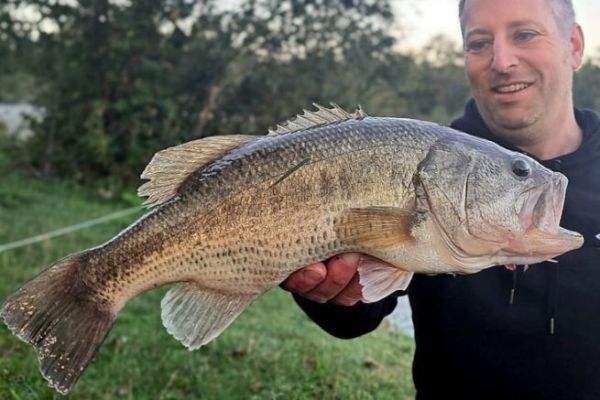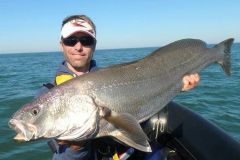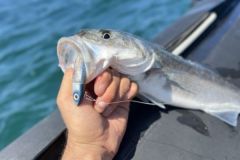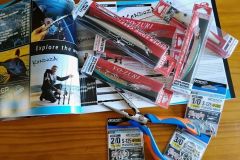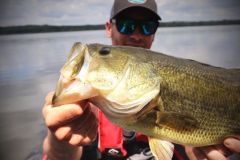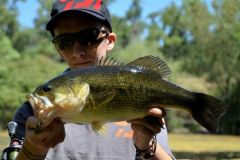What you need to know
The black bass is a freshwater carnivore native to North America. Imported for its fighting qualities, it is found in calm, shallow areas, often rich in aquatic vegetation: ponds, lakes, backwaters... A warm-water fish, it prefers waters between 18 and 25°C, and is particularly fond of slow currents, weed beds and submerged structures.
Choose an area to prospect
In summer, the peak season for black-bass fishing, scouting is essential. This fish seeks out shelter and areas where it can find both food and security. Pontoons, fallen trees, rocks, roots, boats and floating vegetation are all potential habitats. These structures offer ideal hiding places from the sun, but above all, they concentrate the forage fish. These are strategic areas to explore as a priority.
Prospecting is done gradually. Always start by fishing the edge from a certain distance, so as not to spook the fish. At each advance, it's important to be discreet, to walk without excessive vibration on the ground, and to avoid cast shadows on the water. Black bass are very wary, and any disturbance can cause them to flee or become inactive. It's better to catch a fish discreetly right from the start than to ruin the whole area with a sudden approach.
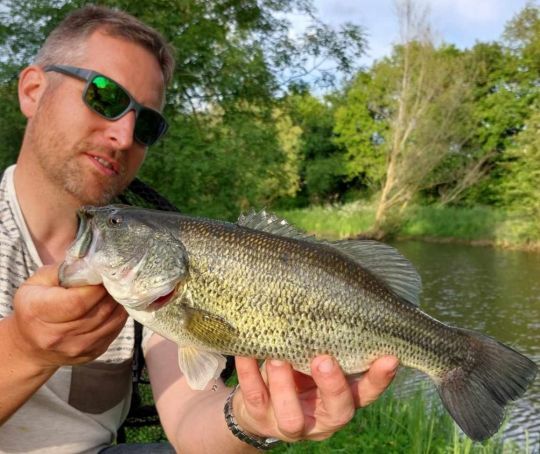
Seasonality and behavior of black bass
The season has a direct influence on black bass behaviour. In autumn and winter, they move to deeper areas where temperatures remain stable. This makes them less active and harder to locate. This is when slow bottom fishing is most effective, especially with rigs such as the Texas or Carolina rig, which are gently animated.
In spring, the first temperature rises trigger reproduction. In May-June, black bass build their nests on the edge of the lake, in little water. During this period, the males stay close by to protect the eggs and fry. It's important to limit harvesting at this time: catching a fish guarding its nest can jeopardize an entire reproduction.
Black bass are most active and accessible in summer. Shallow areas, dense grass beds and shaded areas become its preferred hunting grounds. They often move to the edges, seeking shelter or predation opportunities.
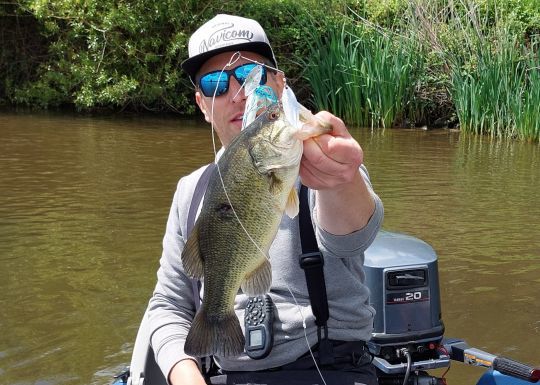
Equipment for black bass fishing
Fishing tackle must be carefully selected to meet the specific needs of this fish. As black bass are often targeted in congested areas or on the surface, precision and discretion of casting are essential criteria.
A short, responsive casting rod with a length of 1m80 to 2m10 provides good control in dense environments. It offers better control for powerful strikes, especially with Texas lures or rubber jigs. For those who prefer a lighter approach, a spinning set is ideal, especially for fine weightless or drop shot fishing.
In terms of power, a rod from 5 to 15 g covers most situations. It can be used for both light surface lures and soft lures with discreet sinkers.
Finally, polarized glasses, although often overlooked, are part of the basic equipment for this type of fishing. They reduce reflections on the surface of the water and allow you to observe fish behaviour, their presence or their lure tracking.
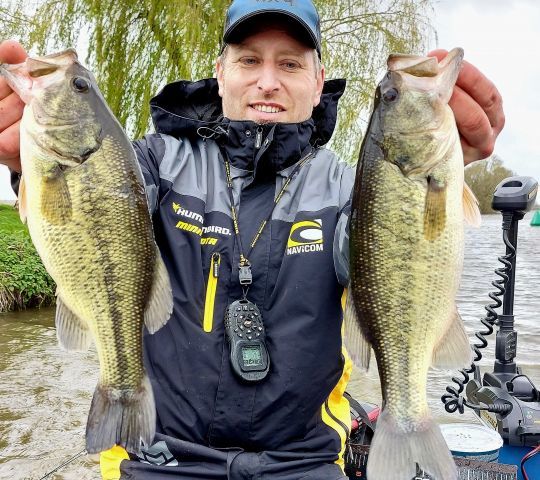
Preferred lures and fixtures
Black bass fishing allows for a wide variety of lures, but certain types are a must:
- Surface lures poppers and stickbaits are ideal in the morning or evening, but also on overcast days or before thunderstorms. They can provoke spectacular visual attacks.
- Soft lures like worms, finess or soft jerks, are classics. They animate gently to seduce wary or inactive fish. Used in weightless, wacky, texas or drop shot rigs, they adapt to all environments, from shallow edges to dense weedbeds.
- Vibratory decoys like spinnerbaits and chatterbaits, are ideal for rough or turbid waters. Their vibrations trigger reflex attacks, even from a distance.
- The creatures often used with Texas or jig rigs, imitate bottom prey such as crayfish or larvae. Their use is recommended in very crowded areas or when fishing slowly.
Each lure can be rigged using different techniques (Texas, Carolina, Drop shot, Wacky, Weightless), each with its own specificities. It's a good idea to be familiar with several of them, so you can adapt to the depth, bottom or mood of the fish.
Final tips
Fishing for black bass requires a good dose of observation, adaptability and, above all, patience. This fish is cunning, and catching it can reward persistence as much as finesse. Always bear in mind that regulations may vary from one département to another: check opening times and minimum sizes. The regulatory mesh size is 30 cm, but releasing a fish, even a meshed one, is a fine gesture to preserve local populations.
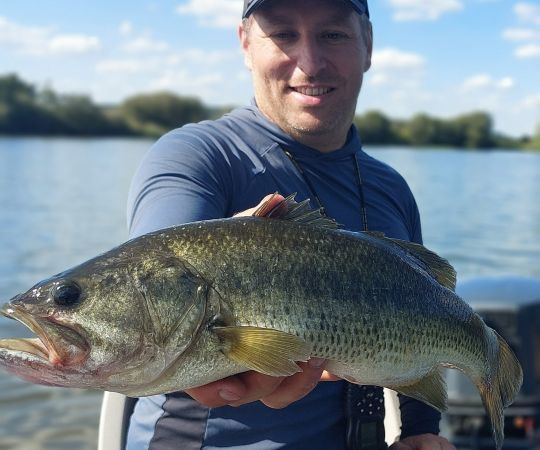
With these basics, you now have all the keys you need to tackle black-bass fishing under the right conditions. The rest will come with experience on the water, observation of behaviour and the desire to progress.

 /
/ 